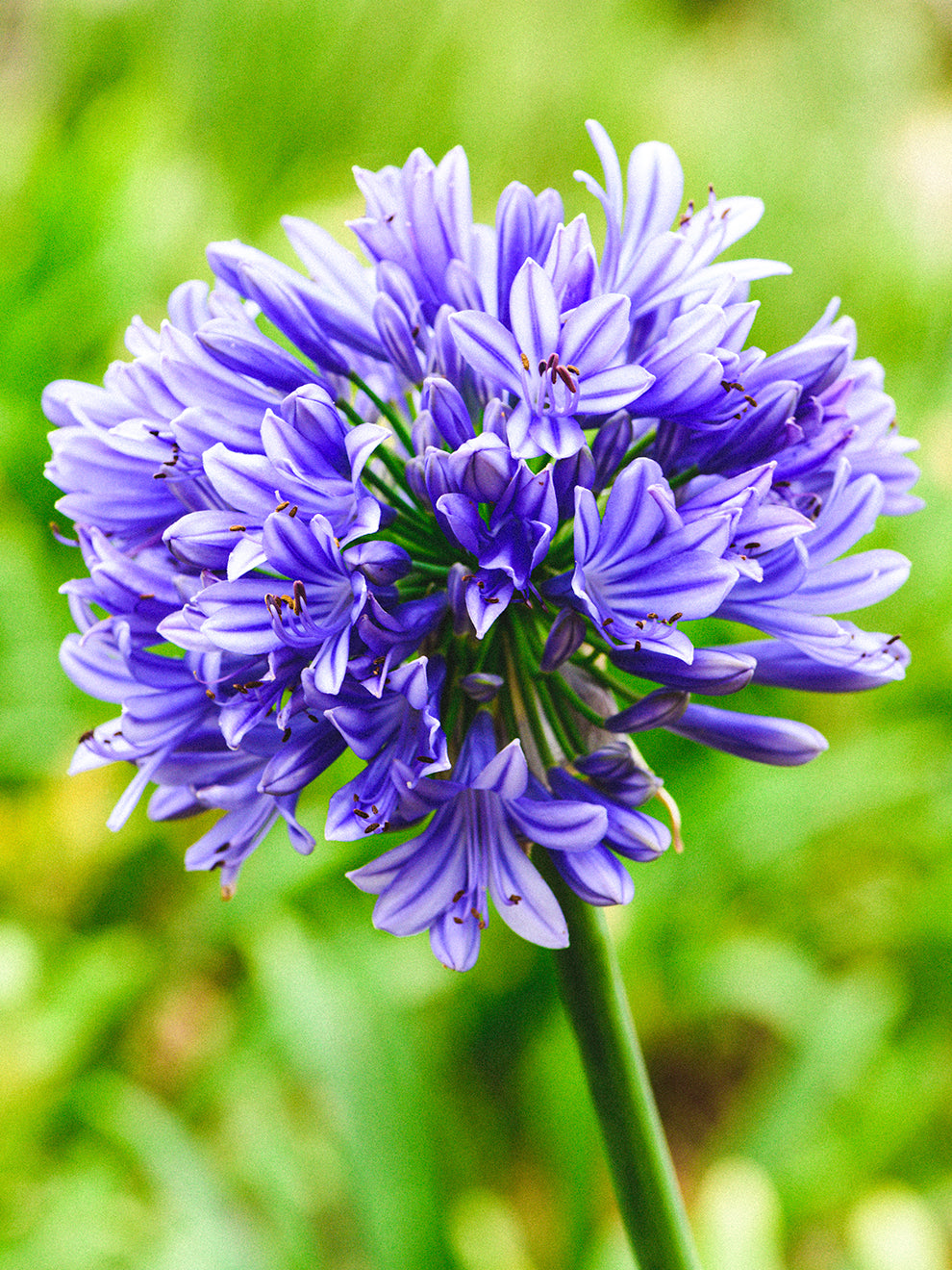Seasonal Agapanthus Treatment: Planning For Winter Months and Summer season
Seasonal Agapanthus Treatment: Planning For Winter Months and Summer season
Blog Article
Unleashing the Secret to Successful Agapanthus Cultivation: Tips and Tricks for a Flourishing Garden
In the world of horticulture, growing agapanthus successfully needs a strategic approach that includes different elements of plant care. By comprehending the nuances of agapanthus farming, one can create an environment where these plants thrive and bloom abundantly.
Growing Agapanthus: Ideal Practices
When planting Agapanthus, proper soil preparation is important for ensuring effective development and growth of these stunning blossoms. Agapanthus, typically known as Lily of the Nile or African lily, thrives in well-draining dirt with a slightly acidic to neutral pH level - Agapanthus. Prior to growing, it is critical to change hefty clay dirts with natural matter such as compost or peat moss to boost water drainage and supply important nutrients for the plants
To plant Agapanthus, select a place that obtains full sunshine to partial shade, as this will certainly advertise healthy and balanced development and bountiful flowering. Dig an opening twice the diameter of the plant's origin round and position the Agapanthus at the exact same depth it was previously growing. Delicately backfill the hole with dirt, weighing down firmly to remove any air pockets around the origins.
Water the newly grown Agapanthus thoroughly and continue to keep the dirt uniformly damp, particularly during the plant's active growing season. Agapanthus. Applying a well balanced fertilizer once a month can even more support the plant's development and flowering. By complying with these best techniques for growing Agapanthus, you can produce a spectacular screen of these captivating flowers in your yard
Suitable Dirt Issues for Agapanthus
For optimum growth and growing success of Agapanthus plants, guaranteeing the soil problems are excellent is critical. Agapanthus prefers soil that is abundant in nutrients, so including a balanced fertilizer throughout the growing season can advertise healthy and balanced development and vivid blossoms.

Watering and Fertilizing Tips
To ensure healthy development and vivid flowers, appropriate watering and feeding methods are essential for successful Agapanthus growing. Agapanthus plants profit from normal watering, specifically during the growing season. It is advised to water deeply when a week, making certain the soil is damp however not soaked. During heat or in pots, even more constant watering may be needed to stop the soil from drying entirely.
When it comes to feeding Agapanthus, a well balanced plant food with equivalent parts nitrogen, phosphorus, and potassium can be applied in the springtime to promote healthy and balanced growth and flowering. Slow-release fertilizers are excellent for offering nutrients progressively over a prolonged duration. Prevent over-fertilizing, as this can result in too much vegetation development at the expenditure of flowers.
In addition, incorporating organic issue like compost into the soil can improve nutrient degrees and boost dirt framework, aiding in the general wellness of the Agapanthus plants. By complying with these watering and feeding suggestions, gardeners can ensure their Agapanthus plants prosper and create magnificent display screens of flowers.
Trimming and Deadheading Techniques
Proper pruning and deadheading techniques play a crucial duty in preserving the health and aesthetic appeals of Agapanthus plants, enhancing the important techniques of watering and fertilizing for effective growing. Pruning Agapanthus involves eliminating invested blossom heads, yellowing or dead fallen leaves, and total shaping of the plant to promote far better growth. Deadheading, the procedure of removing discolored blossoms, not just improves the plant's look but also encourages additional growing.
When deadheading Agapanthus, it is recommended to trim off the flower stem at the base using sharp, tidy shears. This process reroutes the plant's power from seed production back right into root and foliage development, promoting a healthier and more robust plant. Normal deadheading can expand the blooming period of Agapanthus and check this avoid self-seeding, which can cause congestion.
In regards to trimming, Agapanthus generally take advantage of a light trim after blossoming to clean up the plant and urge fresh growth. Reducing the invested flower stems and eliminating any type of broken or dead vegetation helps maintain the plant's vigor and general appearance. Nonetheless, it is vital to avoid cutting into the crown of the plant, as this can weaken its health and wellness.

Protecting Agapanthus From Pests and Diseases
Applying effective insect and condition administration strategies is essential to securing the health and vitality of Agapanthus plants in farming. One common parasite that influences Agapanthus is the Agapanthus borer, a caterpillar that tunnels into the plant, creating damages to the flowers and fallen leaves.
In addition to bugs, Agapanthus are vulnerable to conditions such as root rot and fungal fallen leave places. By remaining alert and dealing with pest and condition issues immediately, garden enthusiasts website here can aid their Agapanthus thrive and grow.

Conclusion
Finally, effective growing of agapanthus calls for correct planting strategies, suitable dirt conditions, appropriate watering and feeding, normal trimming and deadheading, and defense from diseases and parasites. By following these methods and pointers, gardeners can make sure a flourishing garden loaded with attractive agapanthus blossoms. Agapanthus. blog Keep in mind to maintain regular treatment and focus to information to promote the health and longevity of these magnificent plants
When planting Agapanthus, appropriate soil preparation is crucial for making sure effective growth and advancement of these gorgeous flowers.Water the recently planted Agapanthus completely and continue to maintain the dirt equally wet, specifically throughout the plant's active growing period.For optimal growth and blooming success of Agapanthus plants, making sure the dirt conditions are optimal is critical. When growing or transplanting Agapanthus, make certain the dirt is well-prepared to provide the essential structure for the plants to establish themselves effectively. One typical pest that affects Agapanthus is the Agapanthus borer, a caterpillar that passages right into the plant, triggering damages to the fallen leaves and flowers.
Report this page